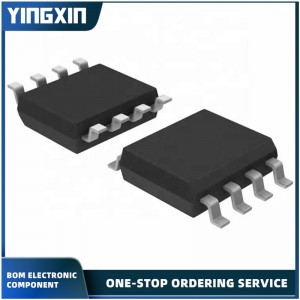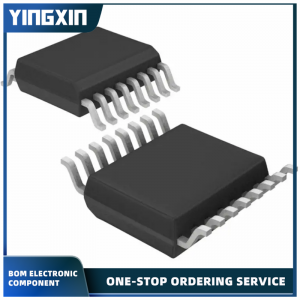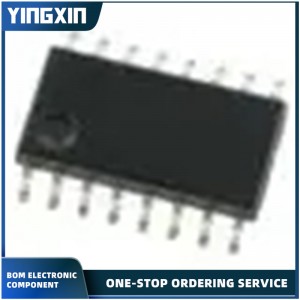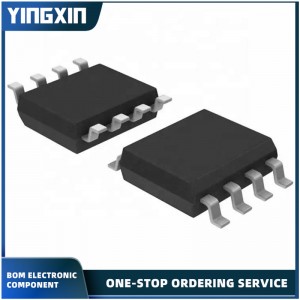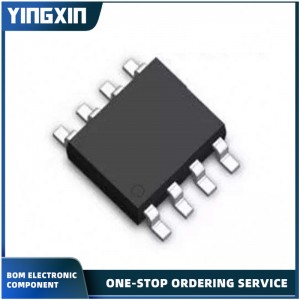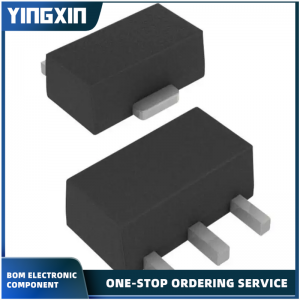Electronic communication class chip supply solutions
Optical chip belongs to the semiconductor field, is the core component of optoelectronic devices. Semiconductor as a whole can be divided into discrete devices and integrated circuits, digital chips and analog chips and other electrical chips belong to integrated circuits, optical chips are discrete devices under the category of core components of optoelectronic devices. Typical optoelectronic devices include lasers, detectors and so on.
As the core component of optoelectronic devices such as lasers/detectors, the optical chip is the core of modern optical communication systems. Modern optical communication system is a system that uses optical signal as information carrier and optical fiber as transmission medium to transmit information through electro-optical conversion. From the process of transmitting signal, first of all, the transmitting end carries out electro-optical conversion through the optical chip inside the laser, converting the electrical signal into optical signal, which is transmitted to the receiving end through optical fiber, and the receiving end carries out photoelectric conversion through the optical chip inside the detector, converting the optical signal into electrical signal. Among them, the core photoelectric conversion function is realized by the laser and the optical chip inside the detector (laser chip/detector chip), and the optical chip directly determines the speed and reliability of information transmission.
From the perspective of more specific application scenarios, the laser chip, which generates photons through electron leaps, for example, covers various aspects. According to its use of photon generation, it can be roughly divided into energy photons, information photons and display photons. The application scenarios of energy photon involve fiber laser, medical beauty, etc. The application scenarios of information photon include communication, auto autopilot, cell phone face recognition, military industry, etc. The typical application scenarios of display photon include laser lighting, laser TV, auto headlights, etc.
Optical communication is one of the most core application areas of optical chips. Optical chips in the field of optical communication as a whole can be divided into two categories: active and passive, and can be further subdivided by function and other dimensions. According to the function of active chips, they can be divided into laser chips for emitting light signals, detector chips for receiving light signals, modulator chips for modulating light signals, etc. As for passive chips, they are mainly composed of PLC optical splitter chips, AWG chips, VOA chips, etc., which are based on planar optical waveguide technology to regulate optical transmission. Comprehensive view, the laser chip and detector chip is the most used, the most core two types of optical chips.
From the industry chain, the optical communication industry chain to accelerate the localization of alternative from downstream to upstream conduction, the upstream chip as a "neck" link to the urgent need for further depth of domestic alternative. The downstream equipment vendors represented by Huawei and ZTE are already the industry leaders, while the optical module field has rapidly completed the localization substitution in the past ten years by relying on the engineer bonus, labor bonus and supply chain advantages.
According to Lightcounting's statistics, only one domestic vendor was among the top 10 in 2010, and by 2021, the top 10 domestic vendors have occupied half of the market. In contrast, overseas optical module manufacturers are gradually at a disadvantage in terms of labor costs and supply chain perfection, and thus focus more on high-end optical devices and upstream optical chips with higher thresholds. In terms of optical chips, the current high-end products are still dominated by overseas, the overall strength of domestic manufacturers and overseas leaders still have a gap.
Overall, from the perspective of products, the current 10G and the following low-end products have a high degree of domestic production, 25G has a small number of manufacturers can be shipped in bulk, more than 25G in the research or small-scale trial production stage, in recent years the head manufacturers in the field of high-end products to accelerate the progress of obvious. From the perspective of application areas, the current domestic manufacturers in the telecommunications market, fiber optic access and wireless access to a higher degree of participation in the field, while in the high-end demand-oriented data communications market has also begun to accelerate.
From the perspective of epitaxial capacity, although the domestic manufacturers of laser chip core epitaxial technology as a whole still has more room for improvement, high-end epitaxial wafers still need to be purchased from international epitaxial factories, but at the same time can also see more and more optical chip manufacturers began to strengthen their own epitaxial capacity, began to IDM mode development. Therefore, the technical ability to focus on high-end products domestic replacement, with independent epitaxial design and preparation capabilities to IDM mode of development of domestic manufacturers with significant competitive advantage is expected to usher in important development opportunities, along with high-end products to open the domestic replacement & digital penetration of the field to start, is expected to fully open the future growth space.
First, from the product point of view, 10G and the following low-end chip domestic substitution continues to deepen, the degree of localization has been higher. Domestic manufacturers have basically mastered the core technology of 2.5G and 10G products, except for some models of products (such as 10G EML laser chip) localization rate is relatively low, most of the products have basically been able to achieve the localization of substitution.



